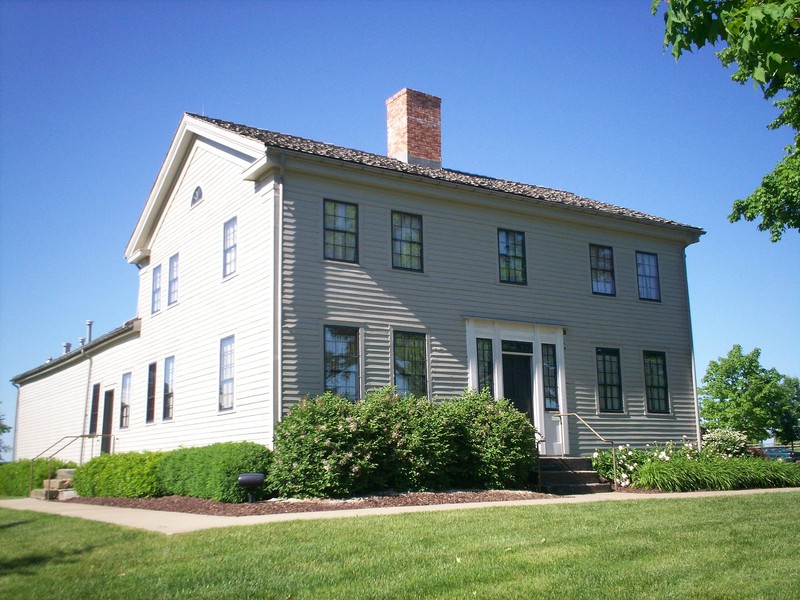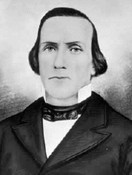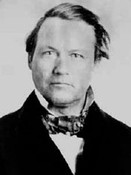John Johnson Farm House
Introduction
Text-to-speech Audio
Images
John Johnson Farm House today

Son Luke Johnson. He joined his family in leaving the church while serving as an apostle, but would return to the church and trek west into the Salt Lake Valley

Another son, Lymen E. Johnson. Also an apostle, though later excommunicated for illegal business dealings and trying to replace Joseph Smith with a close associate as leader of LDS church.

Backstory and Context
Text-to-speech Audio
*From Mormon Historic Sites website:
"The John Johnson Farm served as headquarters for The Church of Jesus Christ of Latter-day Saints for approximately six months between September 1831 and March 1832. Also, in an upper room of the house, several significant revelations were received including Doctrine and Covenants Section 76, the vision of the three degrees of glory.
The Prophet Joseph continued his work of the translation of the bible while living here, and the John Johnson Farm was where the Prophet and Sidney Rigdon were dragged from the house and tarred and feathered on March 24, 1832. Five days later, Joseph and Emma’s adopted son, Joseph Murdock, died due to complications resulting from exposure.
– On February 16, 1832 Joseph and Sidney received the revelations of the three degrees of glory, Doctrine & Covenants Section 76.
– Joseph and Sidney were tarred and feather after being dragged from the farm house on March 24, 1832.
The Johnson’s were converted in the Spring of 1831 with the healing of John’s wife Elsa from rheumatism in her shoulder. Two of the Johnson’s sons, Luke and Lyman Johnson became members of the original Quorum of the Twelve Apostles and their daughter, Marinda, married Orson Hyde.
The Johnson’s fell away from the Church in 1837, although Luke returned to the faith and traveled with the Saints to Utah. Father Johnson died in 1843 in Kirtland where he is buried.
In 1956, the farm was purchased by The Church of Jesus Christ of Latter-day Saints and now serves as a welfare farm for the Church."
Several revelations were received by Smith and other church leaders while at the Johnson Farm. Sixteen of the sections of the Doctrine and Covenants were received. Among these revelations were section 1 (the introduction) and section 76 (the vision of the degrees of glory). As part of section 76, Smith and Sidney Rigdon stated, "And now, after the many testimonies which have been given of [Jesus Christ], this is the testimony, last of all, which we give of him: That he lives! For we saw him, even on the right hand of God; and we heard the voice bearing record that he is the Only Begotten of the Father". Smith also completed part of his revision of the Bible at the Johnson home.
On the night of March 24, 1832, Smith and his wife Emma were caring for their adopted twins, both of whom were sick with the measles. While Joseph was sleeping on the trundle bed on the first floor of the Johnson home, a mob of about 25 attacked him and dragged him out the front door. Smith struggled with the mob but was overcome. The mob choked him, tried to put acid in his mouth, and tarred and feathered him. When Smith got back to the house, Emma thought that the tar was blood and she fainted. Smith's friends spent the rest of the night cleaning the tar off of his body. The next day, Smith preached a sermon to a crowd which included some of the mobbers and baptized three people. One of the twin babies, the eleven-month-old boy named Joseph Murdock Smith, died four days later.
A late second-hand witness, Clark Braden, alleged that Eli Johnson—whom Braden claimed was a son of John Johnson—led the attack and that its intent was to punish Smith for an improper relationship with his sister Marinda. Two other antagonistic witnesses, Hayden and S. F. Whitney, claimed that the motive was economic. However, Eli was, in fact, a brother to John Johnson (and an uncle to Marinda) and was living with the family at the time. The mob enlisted the services of a physician to castrate Smith. However, in the end, the physician refused to administer the procedure.
